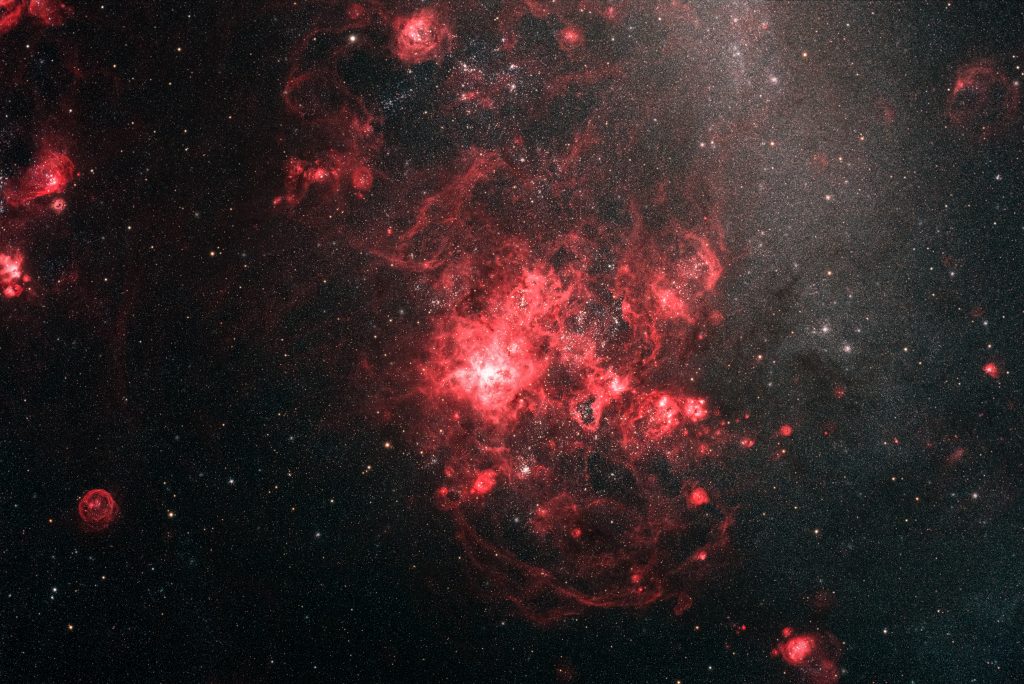Our galaxy Milky Way is surrounded by two dwarf galaxies. Small Magellanic Cloud (SMC) and Large Magellanic Cloud (LMC). SMC I captured recently by the relatively short focal length of 250 mm. LMC is much larger, so it wouldn’t fit into the field of view of my 94 mm refractor. However, LMC is full of very interesting objects, just like the Tarantula Nebula. I used the HaLRGB technique to make the nebulosity pop.

| Telescope | Sharpstar 94EDPH |
| Aperture | 94 mm |
| Focal length | 414 mm |
| Mount | Rainbow Astro RST 135 |
| Autoguiding | ZWO 174MM, QHY Mini Guide Scope |
| Camera | ZWO 2600MM @-10°C |
| Corrector | F4.4 Quad Reducer |
| Filters | Antlia HaLRGB |
| Exposure | 16x180s HaL, 10x180s RGB, Gain 100, bin 1x1, |
| Date | 2022-05-31 |
